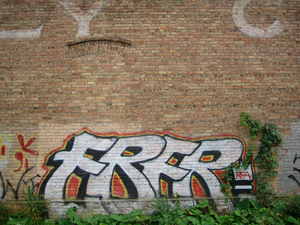 |
|
November 26, 2007
|
|

| Theatrical Oasis |
| Art-chitecture |
| Enchanted Estate |
| Madison Arts Incubator |
| Hand-crafted Healing |
| Designing the Big Day |
| Green Piece |
| Tattoo Taboo? |
| Worth the Wait |
| We Want the Funk |
Madison Arts Incubator: Building a Home for Madison’s Arts Community |
||||||
| Continued... | ||||||
And encouraging growth in the arts is essential—it keeps the community vital, says Chele Isaac, a student in her last year of the masters of fine arts program at UW-Madison. According to Isaac, Madison’s arts community gets a little stale because new artists generally can’t make it here. The city lacks a support structure that could help fledgling artists get off the ground. “After you leave the university,” explained Isham, “it’s really hard to find places to hang your work.” Isaac, too, attested to the city’s limitations. “There is a Common Wealth gallery and campus galleries, but that’s about it.” And while Madison artist Lee Weiss has garnered enough local interest to support herself through the selling of her art, she is well aware of the competitiveness in the art field. While Weiss displays her large-scale, nature-themed watercolor paintings in the Fanny Garver Gallery, she understands that Madison is home to only a limited number of art buyers, making it difficult for most artists to find places to display their work. “We work so hard to hold on to people getting PhDs and professionals in other fields, but in art, our people with master’s degrees leave town, and nobody seems to notice,” Isaac said. Perhaps the inclusion of an arts incubator will warm Madison-grown artists to the idea of staying in the city.
While Madison is a small city in terms of its physical size, its intellectual power differentiates it from other comparably-sized cities, Isaac explains. Madison residents are highly educated, interested in the arts and interested in culture, which makes Madison a perfect location for an incubator. Raising Madison’s Fledgling Artists The incubator would likely have two types of studios: type I, which will be geared toward painters and creators of two-dimensional art; and type II, which will be designed to accommodate three-dimensional artists in disciplines like glass blowing, ceramics and sculpture. In addition to medium-sensitive workspace, the Madison Arts Incubator would also provide its resident artists with an arts-focused environment. Hole explained that the incubator would provide business assistance tailored to the needs of artists, including accountants, art tax and marketing experts. Resident artists would be able to display their work at building shows in the incubator gallery, while also being taught how to get their work displayed in local galleries. Creating Community For example, the incubator would include a gift shop, and resident artists could choose to form a cooperative, running the shop themselves as a means of supplemental income. A workshop room would also be provided in which artists could teach a wide variety of art classes to the public. These classes would be another point of contact between the artists and the surrounding neighborhood.
|
||||||
About Us | Contact Us | Business Partners | Archives | Sitemap
Copyright 2007 Curb Magazine
